In comparison to traditional crust, pan crust is thicker and crunchier. The dough is formed by pushing it into a deep dish pan and letting it rise.
The middle of the crust stays soft and fluffy while the edges of the crust turn crispy and golden.
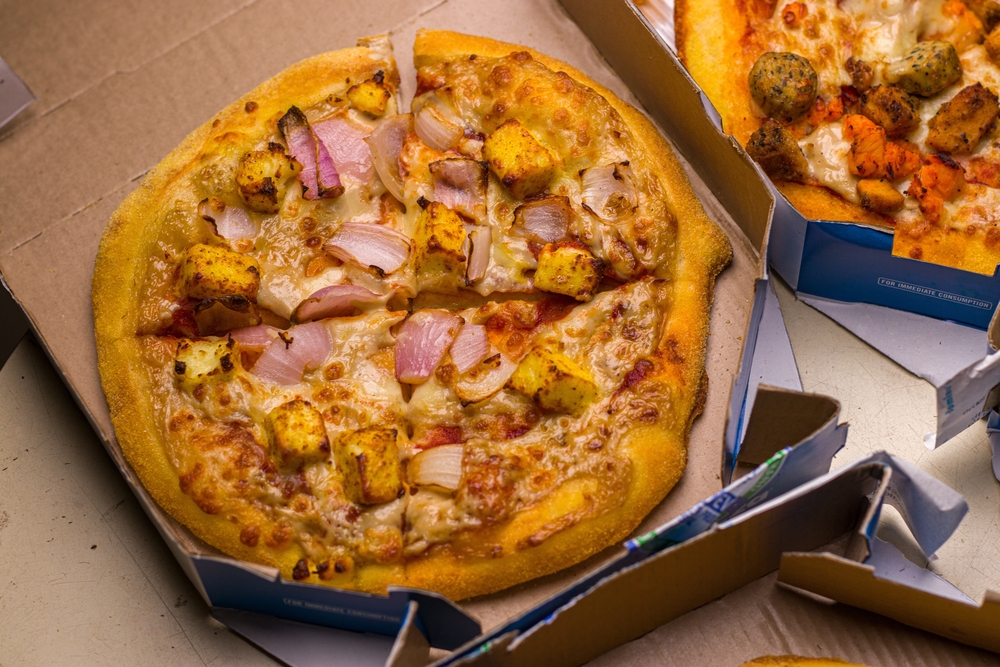
A lot of people favor pan crust above other kinds of pizza crust due to its distinctive flavor and texture.
With more toppings added, the crust’s thickness prevents the pizza from becoming mushy, and the crispy edges lend a delicious crunch to every bite.
Despite being frequently linked with Chicago-style pizza, pan crust pizza is available at pizzerias all around the world.
We strongly advise giving pan crust pizza a try if you haven’t already. Pan crust pizza will satisfy your demands whether you choose traditional toppings like pepperoni and mushrooms or daring dishes like BBQ chicken and pineapple.
So why not order a few pies, gather your loved ones, and indulge in some great pan crust pizza?
What is Pan Crust?
Pan crust is a type of pizza crust that is thicker and crunchier than traditional crust. It is made by pressing the dough into a deep dish pan and allowing it to rise. The edges of the crust become crispy and golden brown, while the center remains fluffy and soft.
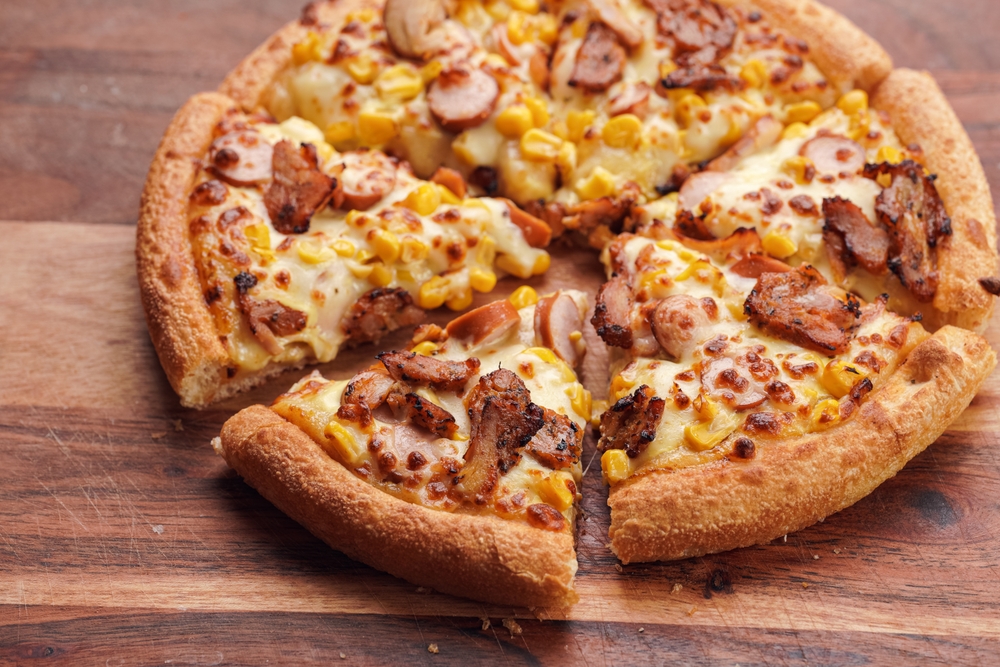
The dough used for pan crust typically contains all-purpose flour, yeast, salt, water, and oil. All-purpose flour is used because it has a medium protein content that creates a tender and chewy crust.
Yeast is added to the dough to help it rise and create air pockets in the crust. Salt is added for flavor, and oil is added to create a crispy texture on the outside of the crust.
Pan crust is different from other types of crust because it is thicker and has a higher hydration level. This means that it contains more water than other types of crust, which creates a softer texture in the center of the crust.
The higher hydration level also makes the dough more difficult to work with, which is why it is typically pressed into a pan rather than stretched by hand.
To make pan crust, the dough is pressed into a deep dish pan and allowed to rise for a period of time. The pan is then placed in the oven and baked until the crust is golden brown and crispy on the outside.
The result is a pizza with a thick, crispy crust that is perfect for holding toppings and sauce.
Pan crust is a delicious and popular type of pizza crust that is beloved by many. Its unique texture and flavor make it a great choice for those who prefer a thicker, crunchier crust on their pizza.
How to Make Pan Crust
When it comes to making a delicious pan crust, there are a few key steps to follow. Here’s how we do it:
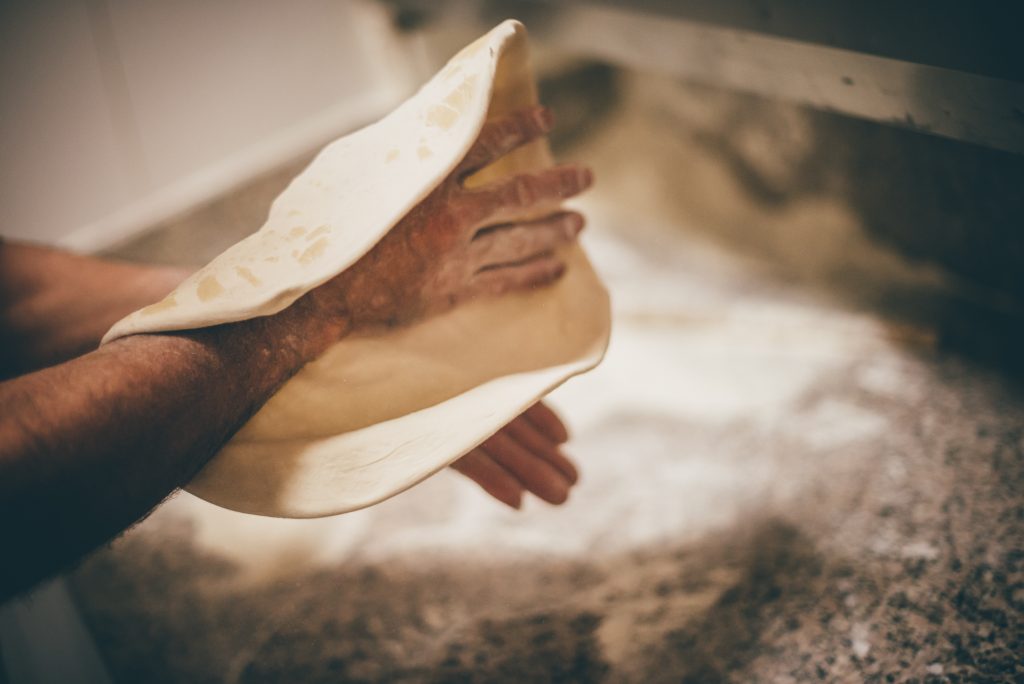
Gather Your Ingredients
Before we start making the dough, we need to gather our ingredients. For a basic pan crust, we’ll need flour, salt, oil, water, and yeast. We recommend using all-purpose flour for this recipe, as it creates a nice balance between chewy and crispy.
Mix the Dough
Once we have our ingredients, we can start mixing the dough. In a large bowl, combine the flour, salt, and yeast. Add in the oil and water, and mix until a shaggy dough forms.
Knead the Dough
Now it’s time to knead the dough. Turn the dough out onto a lightly floured surface and knead for about 10 minutes, until the dough is smooth and elastic. If the dough is too sticky, add a little more flour. If it’s too dry, add a little more water.
Let the Dough Rise
After kneading, we need to let the dough rise. Place the dough in a lightly oiled bowl, cover with a damp cloth, and let it rise in a warm, draft-free place for about an hour, or until it has doubled in size.
Roll Out the Dough
Once the dough has risen, it’s time to roll it out. Lightly dust a clean surface with flour, and roll out the dough to the desired thickness.
Place the Dough in the Pan
Now we can place the dough in the pan. Lightly oil the pan, and carefully transfer the dough to the pan. Gently press the dough into the corners of the pan, and trim any excess dough from the edges.
Add Your Toppings
Finally, we can add our toppings. Whether you’re making a classic cheese pizza or something a little more adventurous, make sure to spread your toppings evenly over the dough.
And that’s it! With a little bit of practice, you’ll be making perfect pan crusts in no time.
Different Types of Pan Crusts
When it comes to pizza crusts, pan crust is one of the most popular options out there. It’s known for its unique texture, thickness, and flavor that sets it apart from other crusts. In this section, we will explore the different types of pan crusts and what makes them unique.
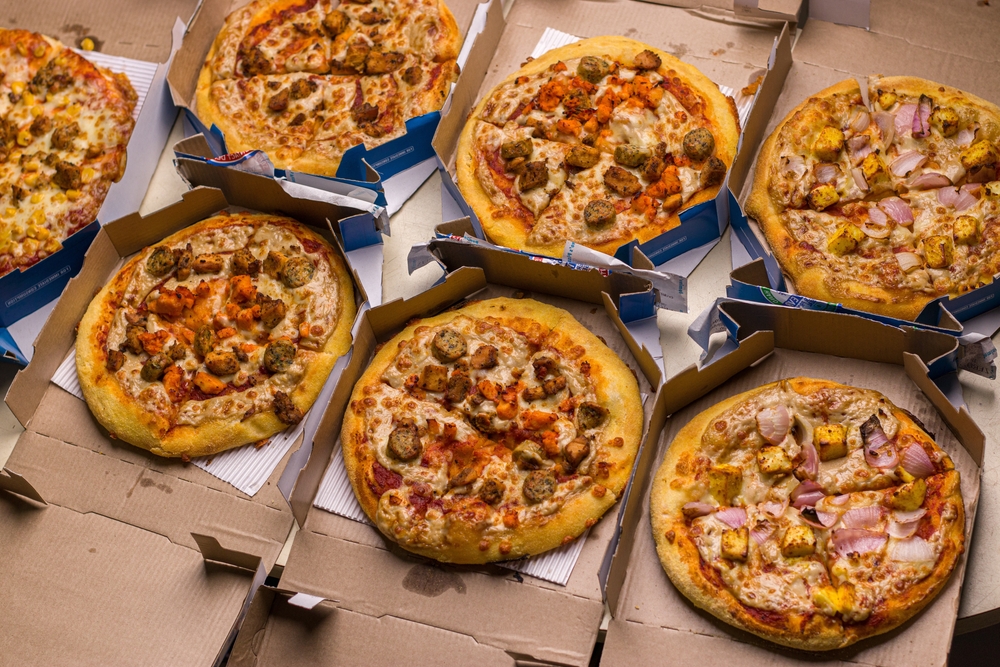
Thick Crust
Thick-crust pan pizza is a favorite among many pizza lovers. It’s perfect for those who want a hearty, filling meal that can handle a lot of toppings.
The crust is crispy on the outside and soft and chewy on the inside. This type of crust is often used for deep-dish pizza.
Buttery Crust
Buttery crust pan pizza is a variation of the traditional thick crust. It’s made with a generous amount of butter, which gives it a rich, savory flavor.
The crust is crispy on the outside and tender on the inside, making it the perfect base for a variety of toppings.
Stuffed Crust
Stuffed crust pan pizza is a popular variation of the traditional pan pizza. It’s made by stuffing cheese or other ingredients into the crust, giving it a delicious, gooey center. This type of crust is perfect for cheese lovers and those who want a little extra flavor in their pizza.
Deep-Dish Pizza
Deep-dish pizza is a type of pan pizza that’s known for its thick, doughy crust. It’s often filled with a variety of toppings, including cheese, sausage, and vegetables. This type of pizza is perfect for those who want a hearty, filling meal that’s packed with flavor.
Hand-Tossed Crust
Hand-tossed crust is a type of pan pizza that’s made by stretching the dough by hand. It’s known for its thin, crispy crust and chewy texture. This type of crust is perfect for those who want a lighter, more delicate pizza.
There are many different types of pan crusts to choose from, each with its own unique flavor and texture.
Whether you prefer a thick, hearty crust or a thin, crispy one, there’s a pan pizza out there for everyone.
Cooking with Pan Crusts
When it comes to pizza crusts, pan crusts are a popular choice for many pizza lovers. They are known for their crispy exterior and thick, chewy interior.
If you’re looking to make your own pan pizza, here are some tips for cooking with pan crusts.
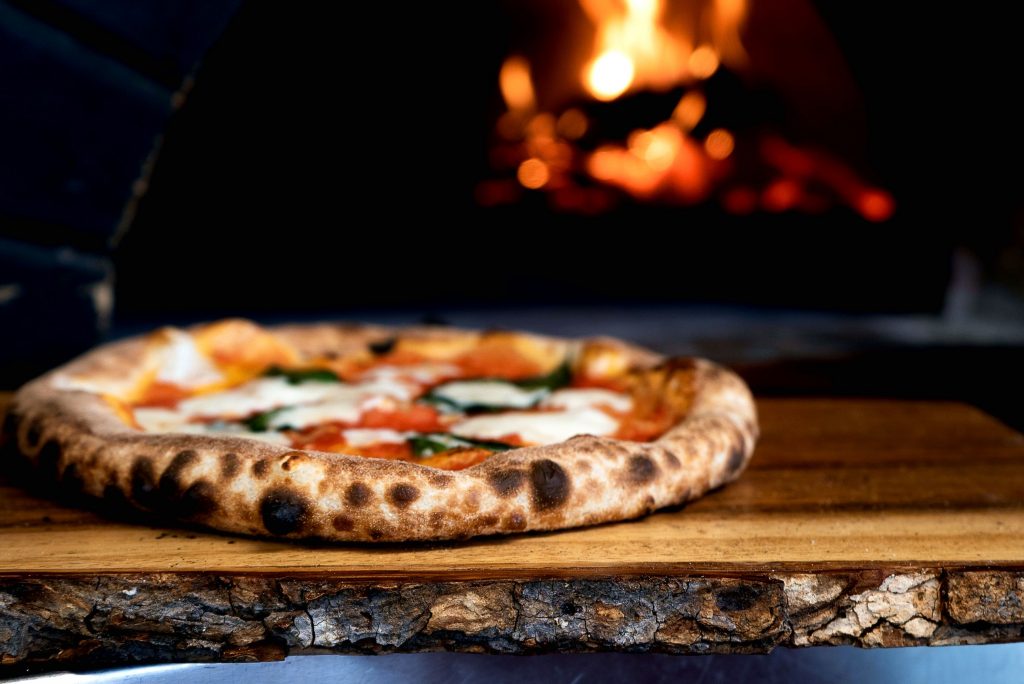
First, it’s important to note that pan crusts generally require a longer baking time than other types of pizza crusts.
This is because the dough is thicker and needs more time to cook through. Keep this in mind when planning your baking time. When it comes to sauce, cheese, and toppings, pan crusts can handle a lot.
However, it’s important not to overload the pizza with too many toppings, as this can make the crust soggy. Stick to a few key toppings and use a light hand when applying them.
For cheese, mozzarella is a classic choice that works well with pan crusts. When it comes to sauce, a simple tomato sauce is all you need.
You can also experiment with other types of sauces, such as pesto or Alfredo, to add some variety to your pizza.
If you’re looking for inspiration, many pizza chains and restaurants offer pan crust pizzas on their menus. Take a look at their offerings for ideas on toppings and flavor combinations.
Pan crusts are a great choice for pizza lovers who enjoy a thicker, chewier crust. With a little practice, you can make delicious pan pizzas right in your own kitchen.
Tips and Tricks for Perfect Pan Crusts
When it comes to making the perfect pan crust, there are a few tips and tricks that we have learned along the way. Here are some of our favorite techniques for achieving a delicious, flaky crust every time.
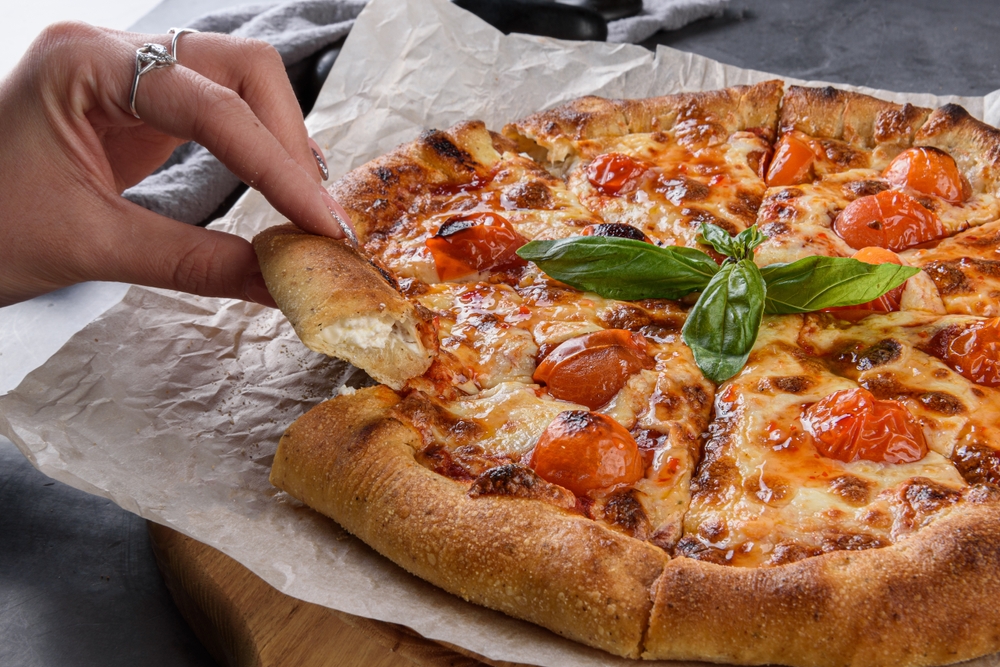
Use the Right Fat
One of the most important factors in creating a great pan crust is choosing the right fat. We prefer to use a combination of butter and vegetable oil, which gives the crust a rich, buttery flavor while also ensuring it stays tender and flaky.
If you prefer a more savory crust, you can swap out the vegetable oil for olive oil.
Add Warm Water
Adding warm water to your crust dough can help create a more tender texture. We recommend using water that is just warm to the touch, but not hot. This will help activate the gluten in the flour without killing the yeast.
Preheat Your Skillet or Cast Iron Skillet
If you’re making a pan crust, preheating your skillet or cast iron skillet can help ensure that the crust cooks evenly and doesn’t stick.
Simply place the skillet in the oven while it preheats, then carefully remove it and add your crust dough.
Brush with Milk or Egg Wash
Brushing your crust with milk or egg wash can help create a beautiful golden brown color and add a little extra flavor.
Simply whisk together a little milk or egg with a pinch of kosher salt, then brush it over the top of your crust before baking.
Use a Baking Stone
If you’re looking for an extra crispy crust, try using a baking stone. Preheat the stone in the oven, then carefully transfer your crust dough to the stone and bake as usual. The stone will help absorb moisture from the crust, creating a perfectly crisp and flaky texture.
Don’t Overwork the Dough
One of the biggest mistakes people make when making a pan crust is overworking the dough. This can result in a tough, chewy crust that is anything but flaky.
To avoid this, handle the dough as little as possible and be gentle when rolling it out with a rolling pin.
Consider Shortening
If you’re looking for a super flaky crust, consider using shortening instead of butter. Shortening has a higher melting point than butter, which means it creates more steam as it bakes.
This steam helps create those delicious, flaky layers that we all love in a good pan crust.
Freezing and Reheating Pan Crusts
When it comes to making pizza at home, sometimes we end up with more pan crusts than we need. Instead of letting them go to waste, we can freeze them for later use. Here’s how we do it:
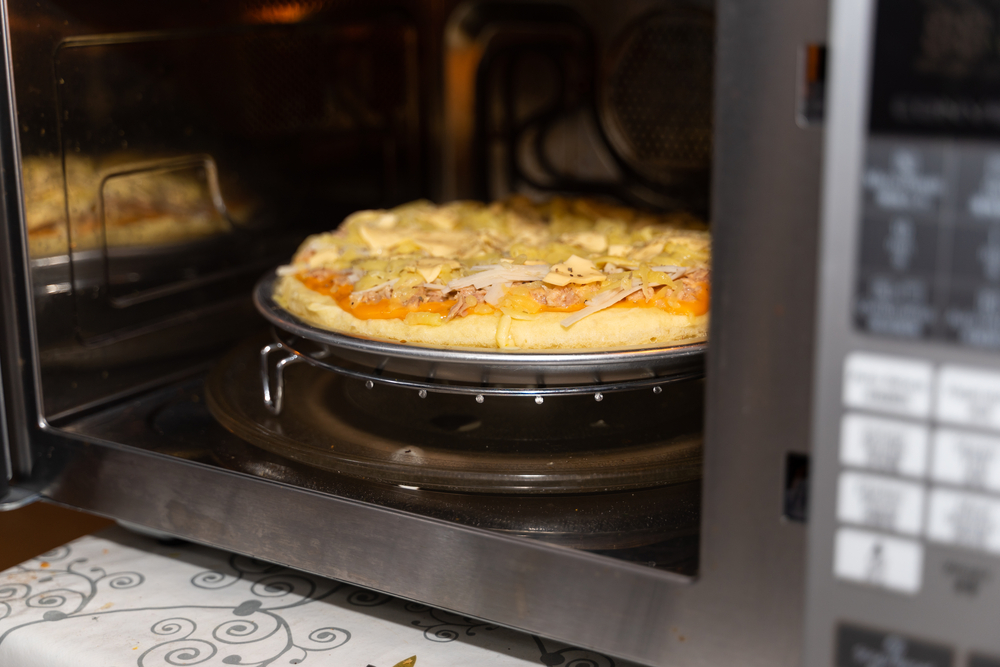
- Let the pan crusts cool completely before freezing. If they are still warm, they will release moisture and become soggy when frozen.
- Wrap each pan crust tightly with plastic wrap or aluminum foil. Make sure it is completely covered to prevent freezer burn.
- Place the wrapped pan crusts in a freezer-safe bag or container. Label with the date and contents.
- Store the pan crusts in the freezer for up to 3 months.
When it’s time to use the frozen pan crusts, here’s how we reheat them:
- Preheat the oven to 425°F.
- Remove the pan crusts from the freezer and unwrap them.
- Place the pan crusts on a baking sheet or pizza stone.
- Bake for 8-10 minutes or until the crust is crispy and golden brown.
- Remove from the oven and add your desired toppings.
- Return to the oven and bake for an additional 8-10 minutes or until the cheese is melted and bubbly.
Leftover pan crusts can also be frozen and reheated in the same way. Just make sure to wrap them tightly and label them before freezing.
Freezing and reheating pan crusts is a great way to reduce food waste and save time in the kitchen.
With these simple steps, we can enjoy homemade pizza anytime we want, without the hassle of making fresh dough every time.
Conclusion
We hope this article has helped you gain a better understanding of pan crust pizza. Pan crust is a thicker and crunchier type of pizza crust that is made by pressing the dough into a deep dish pan and allowing it to rise.
It has become a favorite among pizza lovers around the world due to its unique texture and flavor.
One of the main advantages of pan crust pizza is its ability to hold more toppings than traditional crust.
The deep dish pan provides a sturdy base that can support a variety of ingredients, from classic pepperoni and cheese to more adventurous toppings like pineapple and jalapeños.
In addition, pan crust pizza is often compared to Chicago-style pizza, which is known for its thick, doughy crust.
While there are some similarities between the two, pan crust pizza is typically thinner and less doughy than its Chicago-style counterpart.
Pan crust pizza is a delicious and satisfying option for pizza lovers who enjoy a thicker, crunchier crust.
Whether you prefer classic toppings or more adventurous combinations, pan crust pizza is sure to satisfy your cravings.







Add comment